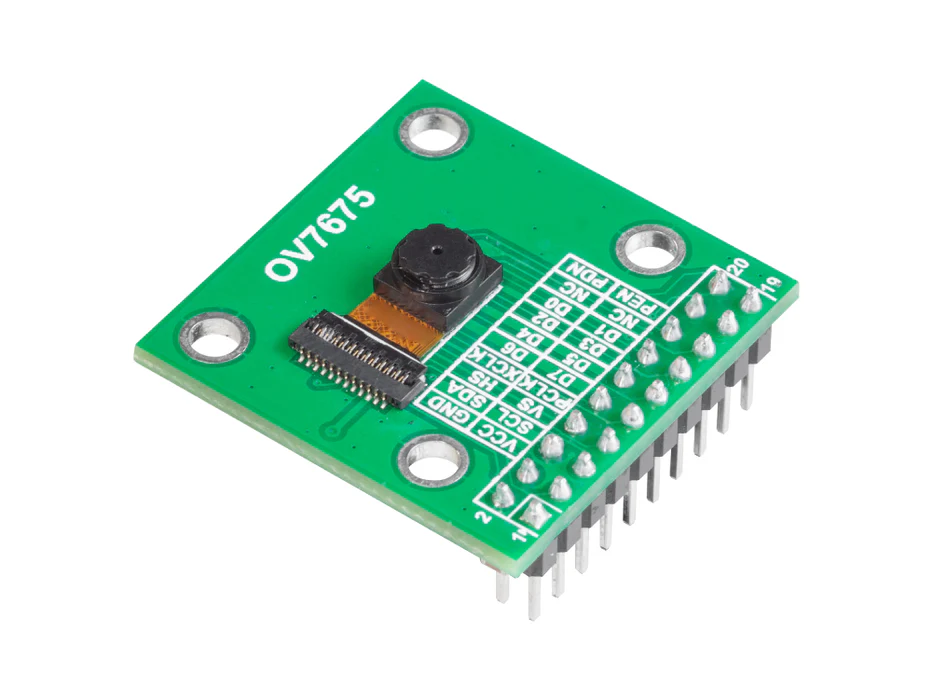
Arducam 0.3MP OV7675 20-pin DVP Camera Module for Arduino GIGA R1 WiFi
Simple interface, compatibility with Arduino libraries, and seamless integration with the Arduino Giga board.
Overview
The Arducam OV7675 camera provides support for resolutions of up to 640x480 pixels, ensuring the capture of clear and sharp images. Its versatile range of features enhances the functionality of your projects. Whether you're developing a home automation system, a smart monitoring device, or any other Arduino-based project that requires visual input, the Arducam OV7675 camera offers a reliable and flexible solution. With its user-friendly interface, superior image quality, and seamless compatibility with the Arduino Giga board, it is an ideal choice for various applications where visual data is crucial.
Tech specs
| Image Sensor | OV7675 |
|---|---|
| Active Array Pixels | 640x480 |
| Pixel Size | 2.5µmx2.5µm |
| S/N Ratio | 38 dB |
| Dynamic Range | 71 dB |
| Interface | 20-pin DVP |
| Shutter Type | Electronic Rolling Shutter |
| Color Filter Array | Quad-Bayer RGB |
| Output Format | RAW/YUV/RGB |
| Resolution&Frame Rate | 640x480/320x240/160x120@15fps |
| Lens Optical Size | 1/9 Inch |
| EFL | 1.75mm |
| F.NO | 2.8 |
| Field of View Angle | 63.9°(D) |
| Lens Distortion | <1.0% |
| Focus Distance | 0.12M - ∞(AT=0.23M) |
| Power Supply | AVDD: 2.7VA ~ 3.0V DOVDD: 1.7V ~ 3.0V DVDD: 1.5V |
| Operation Temp. | -30° C to 70° C |
| Board Size | 30.5mm x 30.5mm |
Get Inspired
Using the Garmin LIDARLite v3HP, Arduino MKR WIFI 1010 and Pushsafer to detect an intruder and send a push notification to a smartphone.

Being able to monitor the weather in real-time is great for education, research, or simply to analyze how the local climate changes over time. This project by Hackster.io user Pradeep explores how he was able to design a simple station outdoors that could communicate with a cloud-based platform for aggregating the sensed data. The board Pradeep selected is the Arduino MKR WiFi 1010 owing to its low-power SAM D21 microcontroller and Wi-Fi/BLE connectivity for easy, wireless communication. After configured, he connected a DFRobot Lark Weather Station, which contains sensors for measuring wind speed/direction, temperature, humidity, and barometric pressure — all in a compact device. Every second, the MKR WiFi 1010’s sketch polls the sensors for new data over I2C before printing it to USB. The cloud integration aspect was achieved by leveraging Qubitro’s platform to collect and store the data for later visualization and analysis. To set it up, Pradeep created a new device connection and copied the resulting MQTT endpoint/token into his sketch. Then once new data became ready, it got serialized into a JSON payload and sent to the topic where a variety of widgets could then show dials and charts of each weather-related metric. To read more about this DIY weather station, you can visit Pradeep’s project write-up here.










